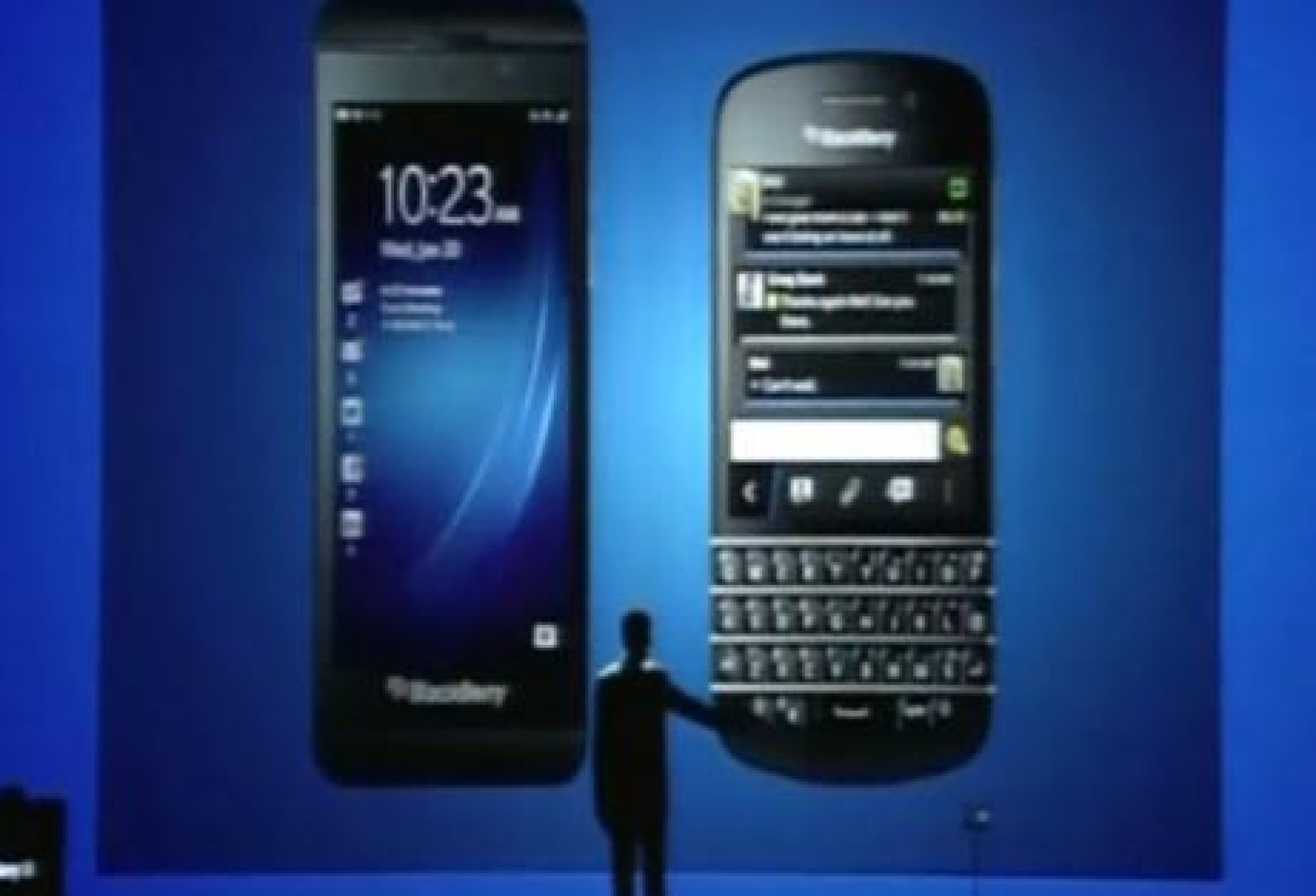Apple iPhone 5 Features: Why An OLED Screen Makes Sense, And Other Launch Rumors [PICTURES]
ANALYSIS
Apple fans are already clamoring for the iPhone 5 -- at least they think that's what it'll be called -- hoping Apple's sixth-generation smartphone comes with plenty of killer features when it's released later this year, either in June or October. And if the latest report is to be believed, future owners of the newest iPhone will be treated to the most beautiful, brilliant screen on any iDevice.
The Korea Times reported that Apple is interested in switching from LCD to OLED screens, and may implement the high-end displays in their next round of iPhones and iPads. The reason behind the potential move would be Samsung, which recently launched its spin-off company called Samsung Display that aims to pivot away from LCD to focus more on OLED technology.
Thanks to the increased volume, chances have been raised to ship Samsung's OLEDs for Apple's iPads and even iPhones, said The Korea Times, citing unnamed Samsung executives who spoke on the condition of anonymity.
Despite ongoing legal battles between the two companies, Apple is by far Samsung's biggest customer. The Cupertino, Calif.-based company bought $7.8 billion worth of components in 2011, ranging from memory chips to LCD panels, but the company will reportedly buy $11 billion worth of parts from Samsung, which could mean Apple is buying more expensive display material.
LCD used to be one of the cutting edge technologies, but it is now a commoditized business, said Jasper Kim, founder and CEO of Asia-Pacific Global Research Group. It can be replicated and reproduced easily.
OLED displays are picking up steam, as the technology can produce richer colors and better pictures in limited amount of space -- think of large, gorgeous TV displays thinner than a pencil. Samsung primarily features its OLED displays on its mobile devices, such as the Galaxy S II smartphone. Yet, the company is considering expansion of the technology to compete with LG Electronics, which wowed audiences at CES 2012 with its large wafer-thin OLED TVs.
Company spokespeople say Samsung will invest about $5.8 billion to develop its display business, but Samsung already brings in plenty of money. The Seoul, South Korea-based company is the world's No. 1 supplier of TVs and flat screens, but also supplies the screens and the chips that power Apple's newest iDevices, including the last two generations of iPads and iPhones.
Even though Apple did not have a booth at CES 2012, the company had about 250 secret employee ninjas hiding among the masses, and it knows that OLED simply beats the pants off LCD. What makes this news even more interesting is that among those ninjas, the one prominent engineer in attendance was none other than the head of Apple's mobile division:
While wandering around the Central Hall of the Las Vegas Convention Center Tuesday, I bumped into Greg Joswiak, head of iOS product marketing for Apple, just outside of Sony's booth, said Tom Krazit, a reporter for PaidContent.org. Joz, as he's known within the Apple community, grinned sheepishly upon being recognized by a reporter and stopped to chat for a few minutes.
Joz added that he wasn't impressed with Sony's offerings. But as companies like Samsung and LG fight to put OLED into televisions, it makes sense that Apple would want to try OLED displays on different-sized devices before anyone else thinks to do it.
Apple has plenty of money to afford OLED screens in an iPhone-sized display. The company recently announced its most successful quarter in its 35-year history in January, and Apple is expected to announce another killer quarter on April 24. Analysts even believe Apple will be the first company in history to achieve a $1 trillion market cap, even though that's somewhat unlikely.
Apple had reportedly tapped Hitachi and Sony to build the 4-inch LCD panels for the iPhone 5 back in January, but given the success of the new iPad, there's an excellent chance Apple will return to Samsung to help build displays for the next-gen iPhone. Samsung knows how to build big, beautiful 4-inch screens: Arguably the company's best offering, the Galaxy S II, features a 4.3-inch Super AMOLED Plus display. Just imagine what Samsung could do with Apple's Retina technology implemented into an OLED. Apple would effectively put distance between the iPhone and all other smartphone competitors for another five years, at the very least.
iPhone 5: Other Likely Features
It's already a foregone conclusion that Apple will implement radio bands for 4G LTE in the iPhone 5, given that Apple introduced the high-speed network on its new iPad, released on March 16, which was likely done as a practice run.
LTE features significantly higher download and upload speeds compared to 3G technologies, but previous implementations of LTE in smartphones tended to ravage battery life, which was a major complaint from users. If Apple wanted LTE in the iPhone 4S at the time, it would have been forced to increase the phone's thickness to accommodate a larger circuit board and a bigger battery. Apple CEO Tim Cook, in a company earnings conference call in April 2011, said first-generation LTE chipsets force a lot of design compromises.
The iPhone 4 PCB [printed circuit board] is already incredibly small, not leaving any room for an extra chip to enable LTE without shrinking the size of the battery, said Anand Shimpi, a chip expert and CEO of Anandtech.
Fortunately, Qualcomm recently unveiled the fifth iteration of its new chip, which supports TD-SCDMA, TD-LTE, HSPA+, EV-DO, embedded GPS, and LTE on TDD and FDD networks worldwide. The chip works with Android and Windows 8 devices, but there's a great chance this will be the chip inside the iPhone 5.
Apple's next iPhone may also include a number of the company's recently granted patents. Apple won a major patent on March 6 for a piece of technology called the iWallet, which is a digital system that gives users complete control over their subsidiary financial accounts on their iPhones, and also leverages Near-Field Communication (NFC) technology to complete credit card transactions directly on the phone as well. The iWallet has many different features, including giving users the ability to see their entire credit card profiles, view statements and messages from their banks, and even set parental controls for their children, should they also want to use their iPhones as digital wallets. Outside of the iPhone, users can keep track of their payments and statements within the iTunes billing system, which keeps credit card information and records safe and secure. There's a possibility that iWallet could also work with other Apple utilities, which could allow users to buy things like movie tickets directly within the apps, but only time will tell with that one.
The iPhone 5 might also be the first phone to feature a new piece of software for multi-player gaming. On March 15, the U.S. Patent and Trademark Office published a patent application from Apple that describes a system for multi-player gaming, which allows groups of people to play the same game together and even see it from different perspectives according to the devices' physical relation to one another. The system actually mimics that of the Find My Friends app, in which a user's device detects other nearby devices that it recognizes as friends, and invites them to all join a common application. The technology also determines the relative position of those devices, so some games -- like turn-based role-playing games or card games -- can be played in a specific order.
The best patent of them all, however, may be Apple's patent for crack-resistant glass, granted on Nov. 15. Basically, the crack-resistant glass solution utilizes the same alumino silicate glass used in the iPhone 4 and 4S, but by chemically treating it with potassium and sodium ions, the glass can then achieve greater compression thresholds on the surface and edges of the glass, making it less susceptible to cracks. The patent also involves a shock mount between the glass and the body of the device that will instantly inflate if the device senses it's falling, which is determined by the device's internal accelerometer. An actuator within the device sucks in the cover glass as it accelerates to the ground, protecting it from damage.
iPhone 5: What Will It Look Like?
Even though nobody outside of Cupertino knows what the iPhone 5 looks like, what it can do, or when it's coming out, various reports say the new iPhone will look similar to its predecessors, but could feature a screen that ranges anywhere from the current 3.5-inch size to 4.6-inches. The report of a 4.6-inch screen came from the Maeli Business Newspaper, which quoted an unnamed industry source, according to Reuters.
Two days later, a new report from iMore's editor-in-chief Rene Ritchie stated the iPhone 5 would retain the current 3.5-inch screen -- the same size as all previous generation iPhones -- but adda few new features to keep users interested. Ritchie believes the iPhone 5 could get a little bigger than its predecessors, but he said that it would not be nearly as big as those 4.5-inch-plus Android smartphones.
The truth seems to be somewhere in between Ritchie's report and the Korean source. In early January, as Apple was reportedly gearing up to begin production on the iPhone 5. A source from within China's Foxconn manufacturing plant told 9 to 5 Mac that various sample iPhone 5 prototypes were floating around the factory floor, but there were a number of common features among the phones, including a display that measured at least 4 inches, and a longer and wider form factor that did not match that of the iPhone 4 or 4S. The Foxconn sources believed the iPhone 5 would retain the rectangular shape of its predecessors, which, if true, would put to bed any rumors of a slimmer teardrop design.
iPhone 5: When Is The Release Date?
While it's unclear if this latest rumor can be trusted, previous reports also said Apple would release the iPhone 5 in June. In March, Reuters reported that Apple plans to unveil the next iPhone around the second quarter of 2012. While this report would mean a release in June or July, it did contradict an earlier report from Japanese blog Macotakara, which believed, citing inside sources from the supply chain, Apple would release the iPhone 5 in September or October, effectively abandoning mid-year iPhone launches for a 11-month upgrade cycle starting in the fall.
Macotakara's report of a fall release date is bolstered by iMore's editor-in-chief Rene Ritchie, who said on March 23 that the iPhone 5 will be released in October 2012. Ritchie has a solid track record with Apple news. Last August, Ritchie correctly reported Apple's next iPhone would be unveiled in the first week of October and would be called iPhone 4S, while all other reporters at the time called the speculative device the iPhone 5. Ritchie also correctly pegged the new iPad's unveiling on March 7.
Apple's last iPhone, the iPhone 4S, was the first Apple smartphone released outside the summer months; the original iPhone, as well as the iPhone 3G, 3GS and 4, were all released in either June or July. While there is no clear reason why the 4S was the only iPhone released in the fall, analysts believe the Cupertino, Calif.-based company attempted to implement LTE into the phone, and failed. Now, it would seem the company wants to wait a full year until releasing its next iPhone.
Moving the iPhone's annual release date to October makes sense, given the wild success of the iPhone 4S. Although the phone was largely unchanged from the iPhone 4, Apple added a couple of features like Siri and an 8-megapixel camera, and it became the most-popular and fastest-selling iPhone of all time. No one should be surprised, then, if Apple wants to repeat that formula, releasing its best smartphone yet around the holiday season.
While the report from Foxconn should be recognized, if any report about release dates is to be believed, it should be Ritchie's. Ritchie has valuable sources from within Apple, and his reports have always been highly reliable and accurate. Given that Apple just released its new iPad in March and it will reportedly release a new line of MacBooks in April or May, it would make for Apple to hold onto the new iPhone, let it continue to build hype for several months, and then release it in October, making it a great Christmas gift.














© Copyright IBTimes 2024. All rights reserved.






















